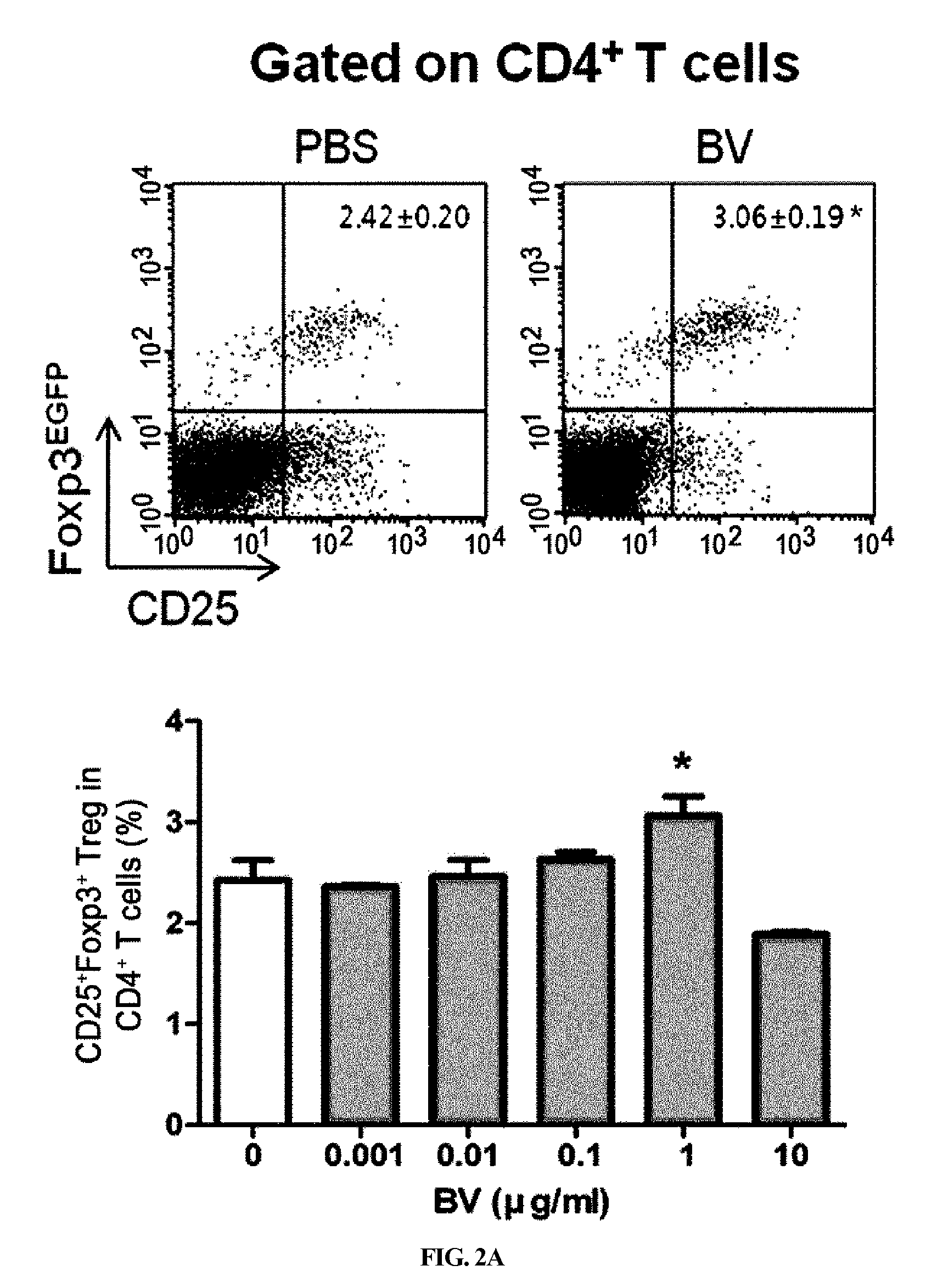Pharmaceutical composition comprising bee venom-phospholipase A2 (BV-PLA2) for treating or preventing diseases related to degradation of abnormal regulatory T cell activity
a technology of phospholipase and bee venom, which is applied in the direction of drug compositions, peptide/protein ingredients, enzymology, etc., can solve the problems of extreme deterioration in cognitive or motor performance of patients with neurodegenerative diseases, increased mucus secretion, and increased neurodegeneration. the effect of deterioration of cognitive or motor performan
- Summary
- Abstract
- Description
- Claims
- Application Information
AI Technical Summary
Benefits of technology
Problems solved by technology
Method used
Image
Examples
example 1
Preparation of Experimental Animals
[0076]Seven to eight-week old female C57BL / 6 mice with a body weight of from 18 g to 23 g were purchased from Charles River Korea (Sungnam, Korea). Foxp3′C57BL / 6 (C. Cg-Foxp3tm2Tch / J) mice were purchased from Jackson Laboratory (Bar Harbor, Me., USA) and seven to eight week old male C57BL / 6J mice with a body weight of from 21 g to 22 g were purchased from Charles River Breeding Laboratory (Yokohama, Japan). All mice were stored under aseptic conditions provided with air conditioning and 12 hour light / dark cycles. Additionally, all mice were given ad libitum access to food and water during the experiment. This study was approved by Animal Experimentation Ethics Committee of Kyung Hee University (Korea).
[0077]1.1. Experimental Autoimmune Encephalomyelitis (EAE)-Induced Experimental Animal Model
[0078]Murine MOG35-55 (M-E-V-G-W-Y-R-S-P-F-S-R-V-V-H-L-Y-R-N-G-K) (SEQ ID NO:24) peptides were purchased from Peptron Inc. (Daejeon, Korea). The peptides were ...
example 2
Separation of Human Peripheral Blood Mononuclear Cells (PBMC)
[0083]Human PBMC was separated from a healthy donor's blood collected using a BD Vacutainer® CPT tube containing heparin sodium. Briefly, the blood was directly collected into the tube via venipuncture and centrifuged at 1600 g for 20 minutes. The cells located on the upper portion of the centrifuged gel were recovered using a pipette and washed twice with PBS. The present invention was approved by the Institutional Review Board (IRB) of Korean Medicine Center of Kyung Hee University (Korea).
example 3
Separation of Murine T Cells
[0084]CD4+, CD4+CD25− T cells and CD4+CD25+ Treg were separated from the splenocytes obtained from female Foxp3EGFPC57BL / 6 mice via magnetic bead separation (CD4+ T cell separation kit and CD4+CD25+ regulatory T cell kit; Miltenyi Biotec, GmbH, Bergisch Gladbach, Germany) according to the manufacturer's instructions. The purities of all the populations were determined via flow cytometry analysis, and they conventionally reached 90% or higher.
PUM
| Property | Measurement | Unit |
|---|---|---|
| concentrations | aaaaa | aaaaa |
| concentrations | aaaaa | aaaaa |
| concentrations | aaaaa | aaaaa |
Abstract
Description
Claims
Application Information
 Login to View More
Login to View More - R&D
- Intellectual Property
- Life Sciences
- Materials
- Tech Scout
- Unparalleled Data Quality
- Higher Quality Content
- 60% Fewer Hallucinations
Browse by: Latest US Patents, China's latest patents, Technical Efficacy Thesaurus, Application Domain, Technology Topic, Popular Technical Reports.
© 2025 PatSnap. All rights reserved.Legal|Privacy policy|Modern Slavery Act Transparency Statement|Sitemap|About US| Contact US: help@patsnap.com



